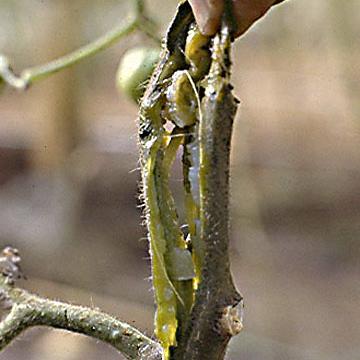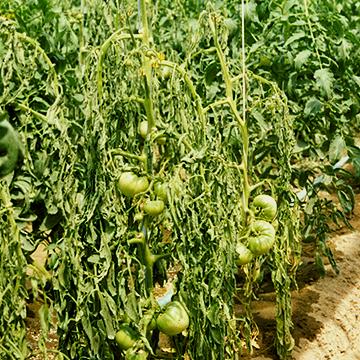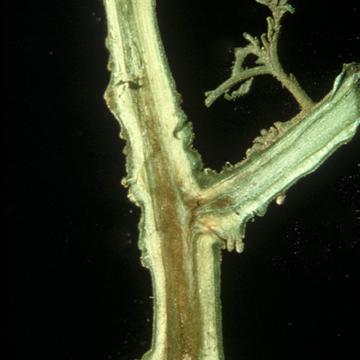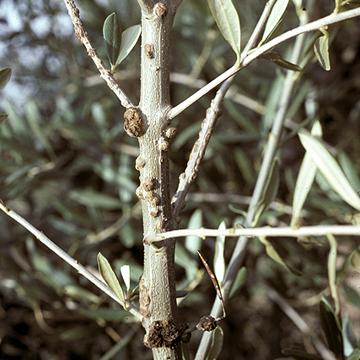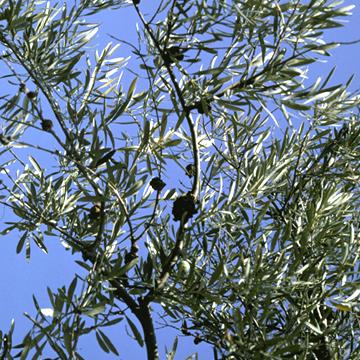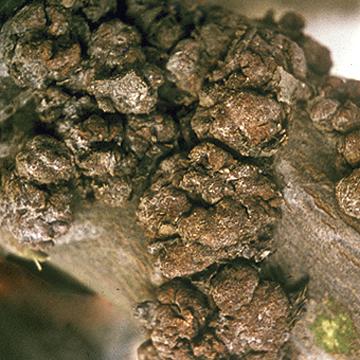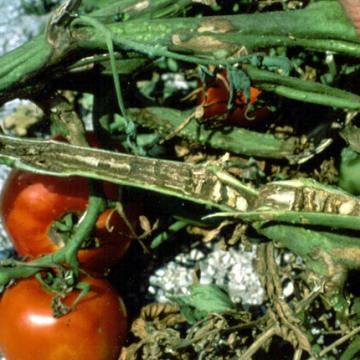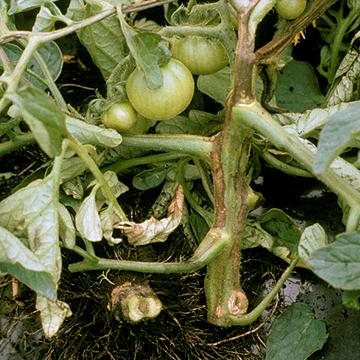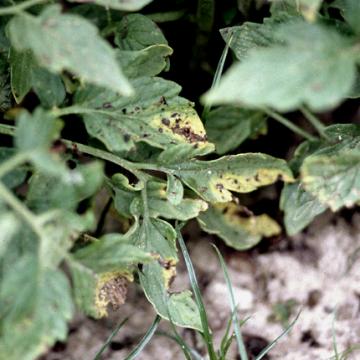DISEASE: Bacterial stem rot
HOST: Tomato
Wilt is first symptom of disease. Later, the pith usually disintegrates, causing hollow and blackened stems.
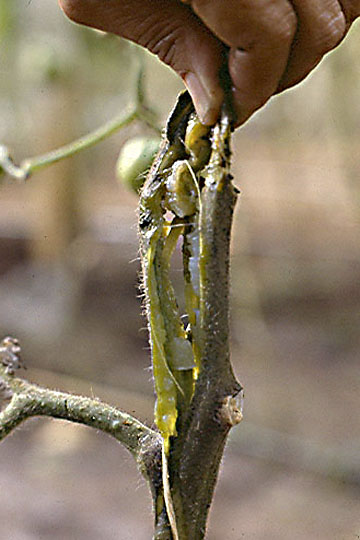
Bacterial stem rot | Tomato
DISEASE: Bacterial stem rot
HOST: Tomato (Lycopersicon esculentum)
PATHOGEN: Pectobacterium atrosepticum
PATHOGEN SYNONYM: Erwinia carotovora subsp. atroseptica
SOURCE: M. Stanghelllini
DISEASE: Bacterial wilt
HOST: Tomato
Severely infected plants in glass house. First symptoms appear as wilt of young leaves. Leaf epinasty may occur.
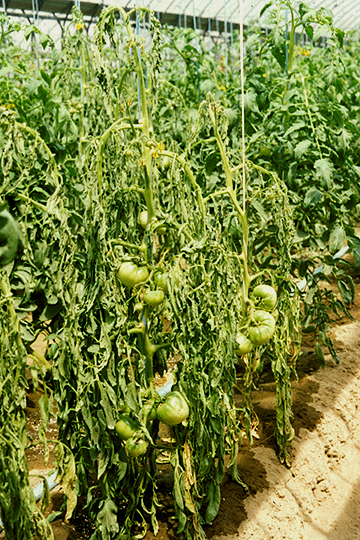
Bacterial wilt | Tomato
DISEASE: Bacterial wilt
HOST: Tomato (Lycopersicon esculentum)
PATHOGEN: Ralstonia solanacearum
PATHOGEN SYNONYM: Pseudomonas solanacearum
SOURCE: M. Goto
DISEASE: Bacterial wilt
HOST: Tomato
Necrotic, brownish, cortical tissues. Massive infection of cortex may result in water-soaked lesions on stem surfaces.
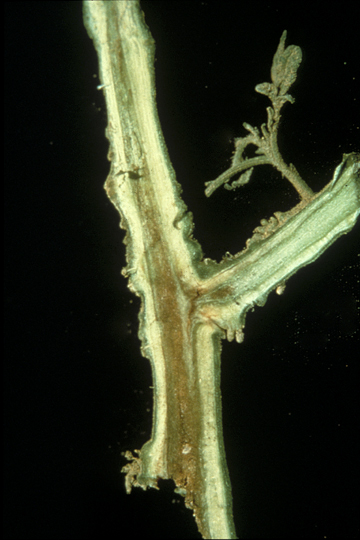
Bacterial wilt | Tomato
DISEASE: Bacterial wilt
HOST: Tomato (Lycopersicon esculentum)
PATHOGEN: Ralstonia solanacearum
PATHOGEN SYNONYM: Pseudomonas solanacearum
SOURCE: A. Hayward
DISEASE: Olive knot
HOST: Olive
Multiple infections of young stems. The bacterium invades vascular tissues during certain times of the year and may be isolated from branches that appear healthy.
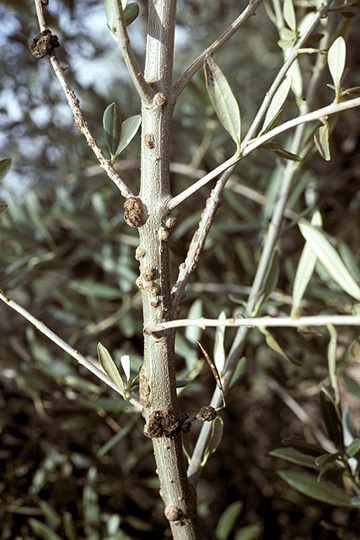
Olive knot | Olive
DISEASE: Olive knot
HOST: Olive (Olea europaea)
PATHOGEN: Pseudomonas savastanoi pv. savastanoi
SOURCE: M. Schroth
DISEASE: Olive knot
HOST: Olive
Tree with knots/galls on branches along with twig dieback, which is associated with knots. Fusarium and Diplodia spp. infect through knots and are thought to be main reason for dieback.
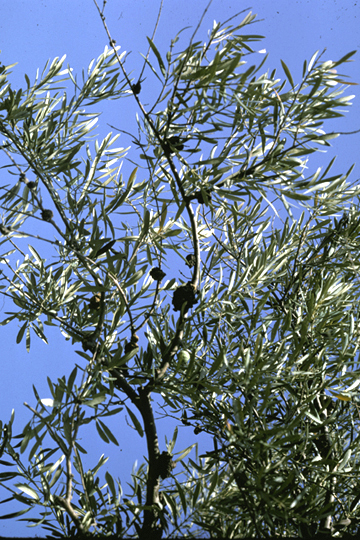
Olive knot | Olive
DISEASE: Olive knot
HOST: Olive (Olea europaea)
PATHOGEN: Pseudomonas savastanoi pv. savastanoi
SOURCE: M. Schroth
DISEASE: Olive knot
HOST: Olive
Multiple infections on olive branch. Knots at this stage begin to die from the outside in and are infected by several fungi.
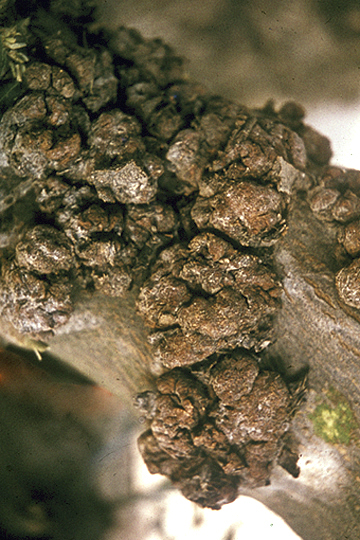
Olive knot | Olive
DISEASE: Olive knot
HOST: Olive (Olea europaea)
PATHOGEN: Pseudomonas savastanoi pv. savastanoi
SOURCE: M. Schroth
DISEASE: Pith necrosis
HOST: Tomato
Cracked, dry, hollow stems with internal necrosis.
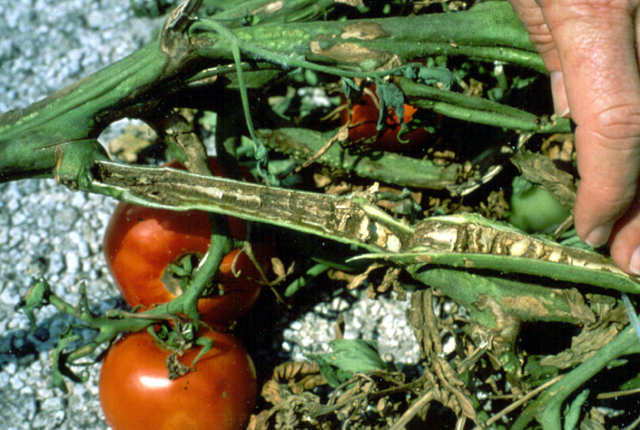
Pith necrosis | Tomato
DISEASE: Pith necrosis
HOST: Tomato (Lycopersicon esculentum)
PATHOGEN: Pseudomonas corrugata
SOURCE: A. Alvarez
DISEASE: Pith necrosis
HOST: Tomato
External necrotic stem tissues. Initial symptoms include chlorosis of young leaves. Wilting may occur when disease is severe.
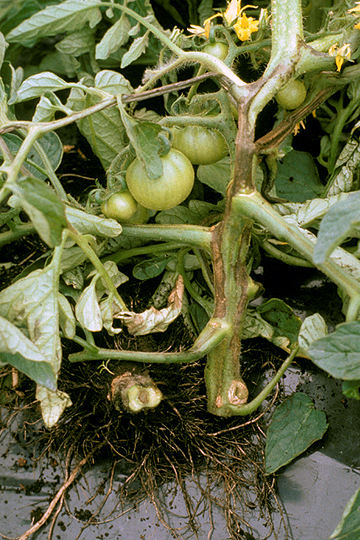
Pith necrosis | Tomato
DISEASE: Pith necrosis
HOST: Tomato (Lycopersicon esculentum)
PATHOGEN: Pseudomonas corrugata
SOURCE: K. Natsuaki, M. Goto
DISEASE: Syringae leaf spot
HOST: Tomato
Leaves with brown necrotic lesions and chlorotic margins. Symptoms vary greatly among cultivars. Some have black or brown lesions with bright yellow, chlorotic areas and others do not have yellowing.
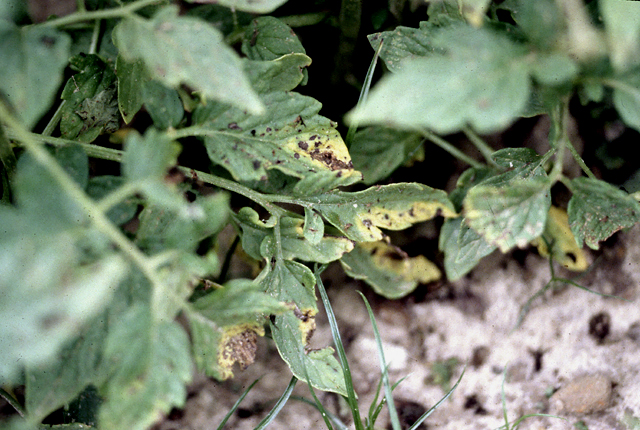
Syringae leaf spot | Tomato
DISEASE: Syringae leaf spot
HOST: Tomato (Lycopersicon esculentum)
PATHOGEN: Pseudomonas syringae pv. syringae
SOURCE: R. Gitaitis


